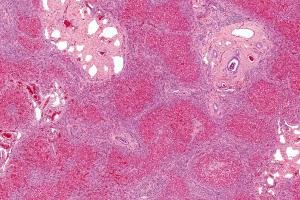Research @ UVA Engineering
Engineering For HealthUVA Engineering is co-located with the top-ranked UVA School of Medicine and UVA Health System, and our culture values and rewards collaboration and initiative.
-

Corrosion and Electrochemistry
Materials Science and Engineering Our corrosion and electrochemistry research tackles real-world issues that resist easy solutions. -

Cyber-Physical and Autonomous Systems
Mechanical and Aerospace Engineering We are taking a national leadership role in the area of underwater, ground-based and aerial autonomous systems, bio-inspired systems, robotics, sensing, and autonomous vehicles. We are able to leverage our state-of-the-art facilities in mechatronics rapid prototyping as well as cyber-physical systems and manufacturing with our strong industrial ties. -

Cyber-Physical System Networks and I.o.T
Computer Science Cyber-Physical Systems (CPS) and the Internet of Things have been identified by the National Academy of Sciences as national research priorities, critical to educating scientists and engineers for an increasingly cyber-enabled future. -
Drug & Gene Delivery
Biomedical Engineering UVA is widely recognized for its strengths in biopanning for novel peptide ligands in vivo, as well as using peptides and antibodies to target the delivery of microbubbles, liposomes and genes in the settings of cancer, cardiovascular and infectious disease. -

ECE in Medicine
Electrical and Computer Engineering Our interdisciplinary research ranges from designing biomolecular sensors to developing data-intensive approaches for ensuring the safety of medical devices. -

Electrical Magnetic Optical Properties
Materials Science and Engineering Our research in electrical, magnetic and optical properties of materials makes modern computation and communication possible. -

Energy and Environment
Chemical Engineering Our chemical engineers are creating innovations in battery chemistry, solar materials, and impacting large-scale energy storage. They're also developing membranes for desalination, forward osmosis, osmotic power, and batteries. Additionally, they're engaged in bioremediation and designing biorenewable molecules to enhance safer and sustainable chemical production and combustable. -

Fibrosis
Biomedical Engineering Our faculty are using computational modeling, systems biology, imaging, biomaterials development, and tissue engineering to understand, image, and treat fibrosis. -

Human-Technology Interaction
Systems and Information Engineering When people interface with technology, complex questions arise: from automous control timing and priority, risk and decision analysis, usable haptics, and computing, and integrating human and machine intelligence, our researchers are improving humans’ ability to work effectively in complex technical systems. -
-

Infectious Disease
Biomedical Engineering The understanding and treatment of infectious disease benefits from multiple engineering approaches, including computational modeling of metabolic networks in pathogens, predictive models of host-pathogen interactions, technology to probe single human parasites, rapid identification of pathogens in clinical samples, and devices for preventing the spread of drug resistant bacteria in hospitals. -

Information and Intelligent Automation
Systems and Information Engineering Exploring intelligent, automated technology and method development and innovative ways these intelligent systems can improve society.